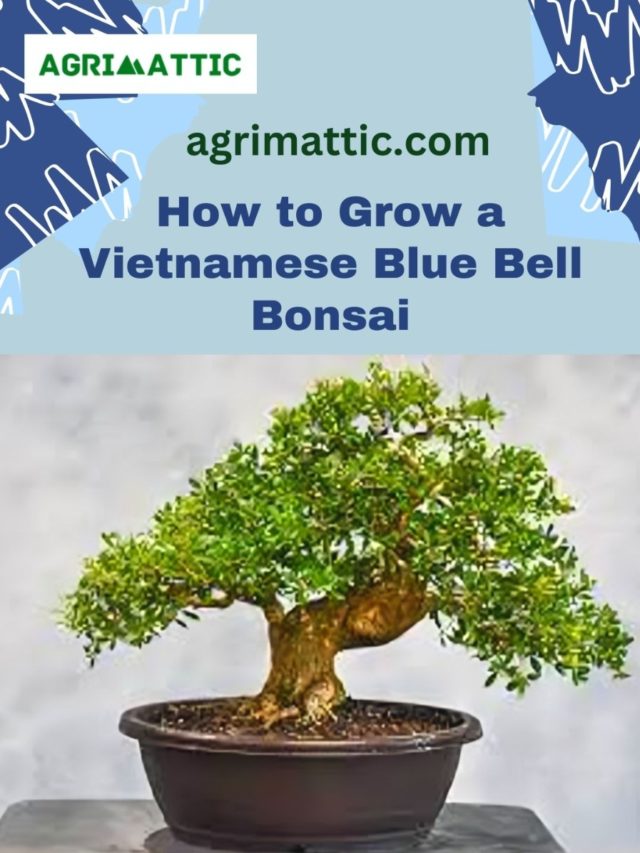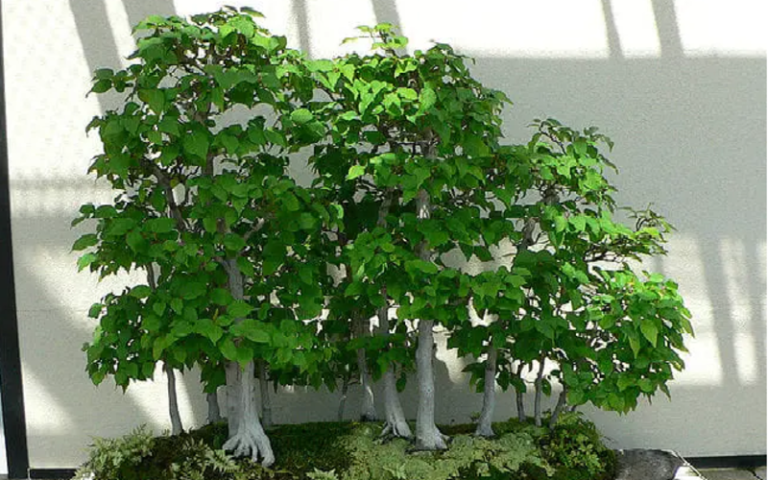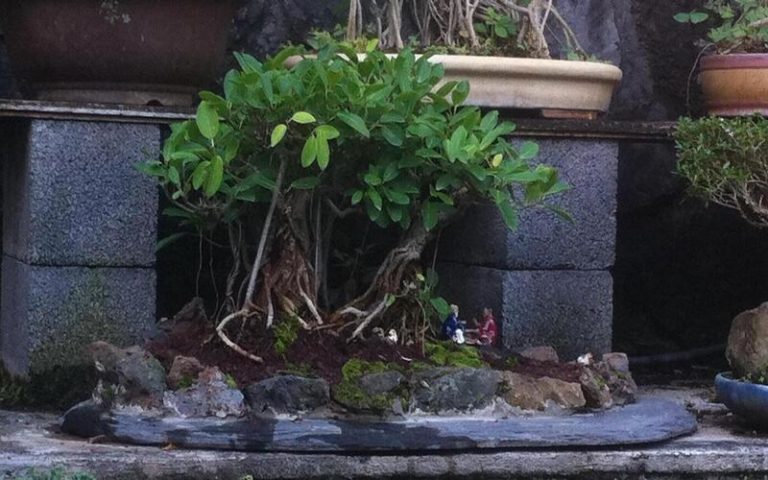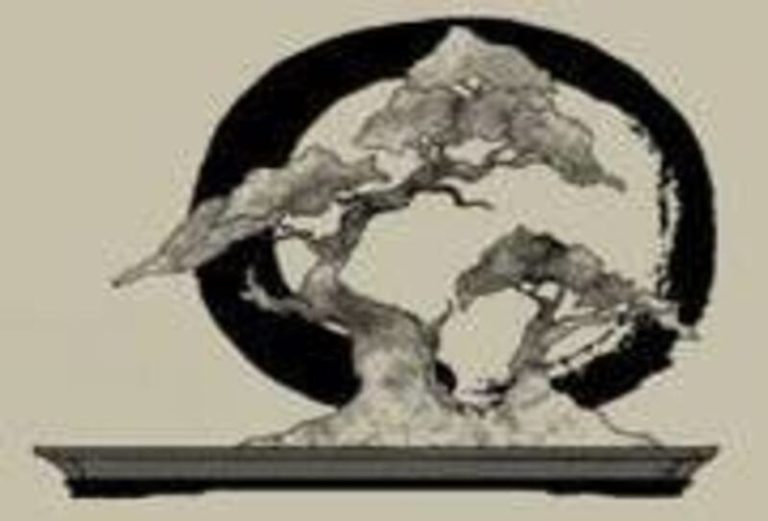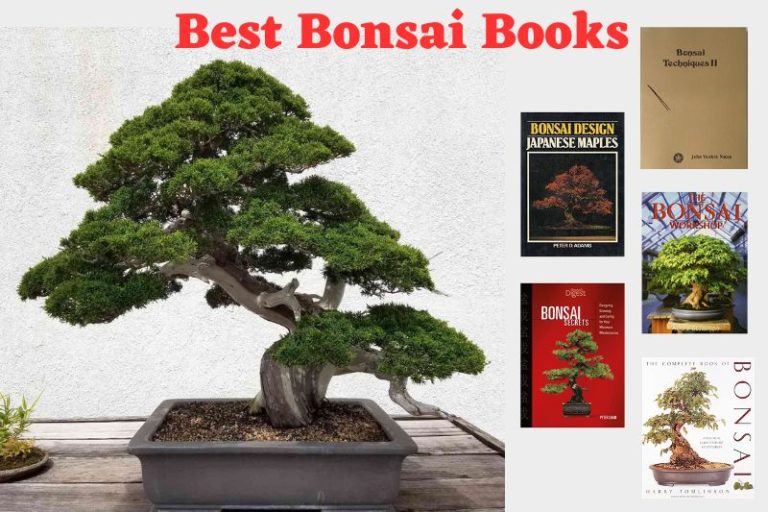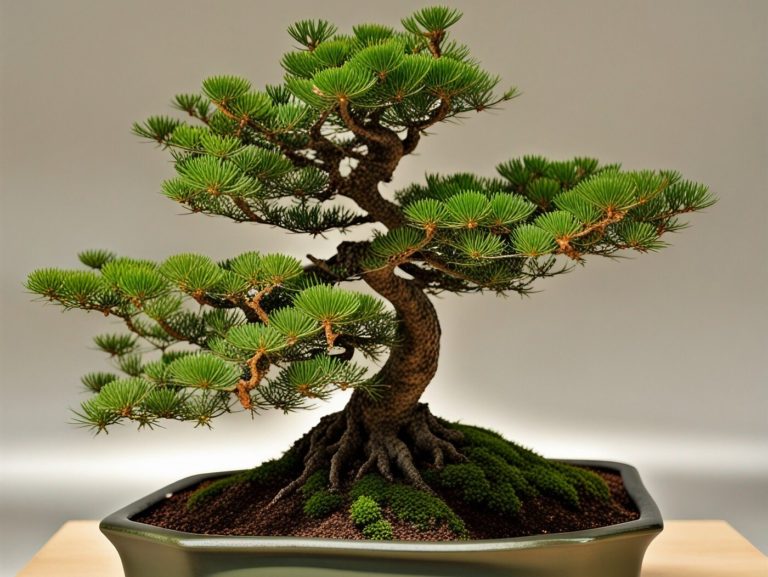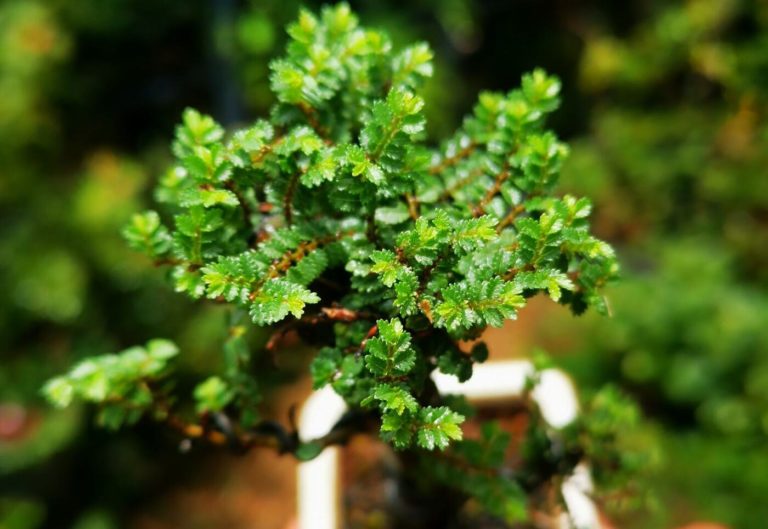Vietnamese Blue Bell Bonsai: A Natural Artistry in Miniature
Bonsai is like creating miniature trees, a form of art that many people admire. One type of bonsai that stands out is the Vietnamese Blue Bell Bonsai. In this article, we’ll explore the beauty and significance of this unique tree and learn how to care for it.
What is a Vietnamese Blue Bell Bonsai?
The Vietnamese Blue Bell Bonsai is a charming tiny tree that is native to Vietnam. It is distinguished by its vivid blue-green foliage and delicate look. It adds natural beauty and tranquillity to any room, making it a favourite option among bonsai aficionados. This one-of-a-kind bonsai has cultural importance and is praised for its beauty and graceful development.
History and Origins of the Vietnamese Blue Bell Bonsai
The Vietnamese Blue Bell Bonsai’s history and origins may be traced back to Vietnam, where it is endemic to the region. This bonsai is a Chimonanthus praecox, popularly known as Wintersweet or Japanese allspice. This one-of-a-kind tree has a long and illustrious history in Vietnam, where it is profoundly ingrained in the country’s thriving bonsai culture.
Bonsai gardening has been done in Vietnam for decades, and the Vietnamese Blue Bell Bonsai has become a valued gem of this art form. Because of its desired qualities and attractive aesthetics, bonsai fans and horticulturists in Vietnam recognized the appropriateness of the Chimonanthus praecox species for bonsai production throughout time.
The Vietnamese Blue Bell Bonsai is recognized for its lovely blue-green foliage and delicate look, making it an ideal option for bonsai shape and styling. The technique of meticulously growing and molding the tree to make a smaller replica of its full-sized counterpart is a labor of love that has been mastered and passed down through generations in Vietnam.
The Vietnamese Blue Bell Bonsai achieved international fame and appeal as bonsai art grew in popularity. Its distinct beauty, along with the cultural importance it has in Vietnam, has captivated the hearts of bonsai lovers and collectors all over the world.
Efforts are now being undertaken to protect and promote the Vietnamese Blue Bell Bonsai, ensuring that its rich history and cultural legacy are valued and embraced. Bonsai lovers throughout the world adore and grow this beautiful little tree as a symbol of natural craftsmanship and cultural legacy.
Vietnamese Blue Bell Bonsai and Their Symbolism
The Vietnamese Blue Bell Bonsai holds special symbolism and cultural significance, both in Vietnam and in the wider world of bonsai enthusiasts. Here are some key aspects of its symbolism:
Beauty and Elegance: The Vietnamese Blue Bell Bonsai is praised for its beautiful and delicate look. Its beautiful blue-green leaves and diminutive stature represent beauty in simplicity, expressing the spirit of nature’s grace in little form.
Tranquility and Serenity: In general, bonsai is associated with tranquility and tranquillity. The calming presence of the Vietnamese Blue Bell Bonsai lends a feeling of peace to any atmosphere. It represents the ability to live in harmony with nature and create a peaceful atmosphere.
Endurance and Resilience: Cultivating a bonsai requires patience and dedication. The Vietnamese Blue Bell Bonsai, like other bonsai varieties, symbolizes resilience and the ability to thrive under careful nurturing and maintenance. It serves as a reminder of the strength and endurance found in nature.
Cultural Heritage: The art of bonsai has profound cultural origins in Vietnam. The Vietnamese Blue Bell Bonsai, which is endemic to the region and has been passed down through generations, provides a link to the country’s customs and values. It is a sign of cultural history as well as a means of preserving and passing along the art form to future generations.
Appreciation for Nature: Bonsai lovers frequently have a deep appreciation for the natural world’s beauty and awe. This respect is embodied by the Vietnamese Blue Bell Bonsai, which allows people to bring a bit of nature’s beauty into their homes or gardens in a compelling and creative manner.
New Beginnings and Growth: Bonsai trees are live symbols of development and growth. The Vietnamese Blue Bell Bonsai, with its ongoing development and shaping, represents the possibility of fresh beginnings as well as the never-ending road of learning and self-improvement.
Cultural Celebrations and Rituals: The Vietnamese Blue Bell Bonsai may have cultural importance in Vietnam at particular ceremonies and rituals. It can be used as a sign of prosperity or good fortune, or it can be used as an offering in traditional ceremonies.
Overall, the symbolism of the Vietnamese Blue Bell Bonsai is complex and includes ideas of beauty, tranquillity, cultural history, and a love of nature. It is a prized representation of natural craftsmanship and a cherished addition to any bonsai enthusiast’s collection due to its artistic appeal and cultural significance.
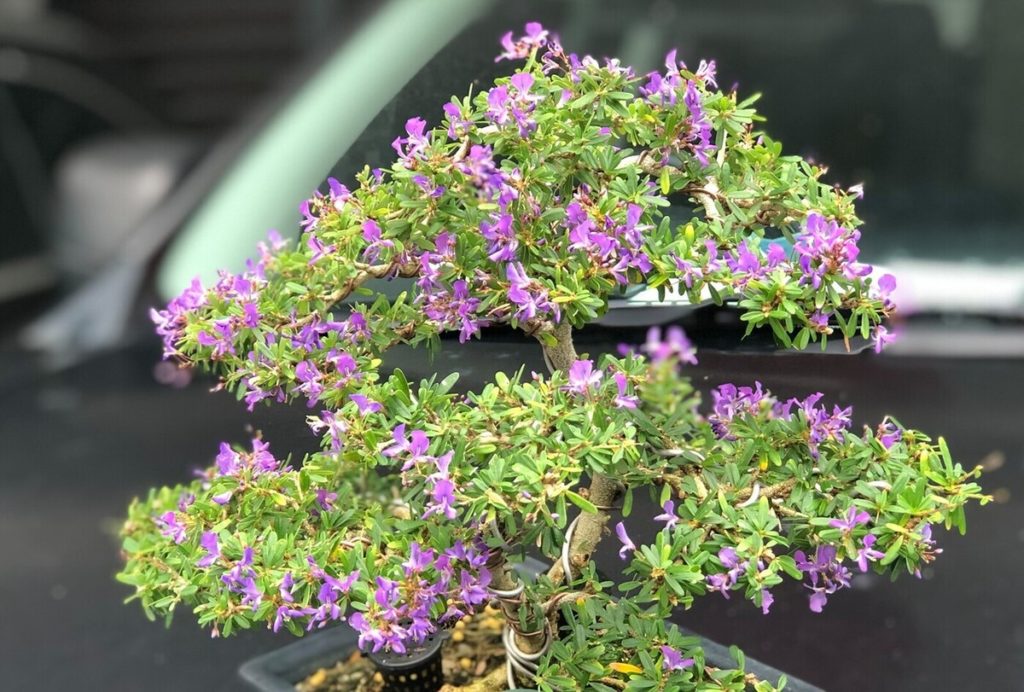
Characteristics of the Vietnamese Blue Bell Bonsai
The Vietnamese Blue Bell Bonsai, formally known as Chimonanthus praecox, has various distinguishing traits that make it a distinct and appealing bonsai cultivar. The following are the primary characteristics of the Vietnamese Blue Bell Bonsai:
Foliage: The Vietnamese Blue Bell Bonsai’s most noticeable characteristic is its stunning blue-green foliage. The leaves are tiny, delicate, and oval in form, lending to the plant’s lovely and beautiful look.
Flowers: The fragrant and bell-shaped blossoms on this bonsai are one of its most appealing features. The blossoms are often pale yellow or creamy white in color, contributing to the overall appeal of the bonsai. During the late winter months, they blossom, giving a lovely smell that pervades the surrounding environment.
Size: The Vietnamese Blue Bell Bonsai is a small to medium-sized tree that is well-suited to bonsai gardening. Its small size makes it ideal for indoor or limited-space outdoor applications.
Growth Pattern: The bonsai has an elegant growth pattern, with its branches arching gracefully outward. When correctly trimmed and taught, the tree’s branches can be arranged to produce an aesthetically appealing and balanced composition.
Hardiness: The Vietnamese Blue Bell Bonsai is generally hardy and well-suited for bonsai care. It can tolerate a range of temperatures, but it prefers warmer climates.
Aesthetics: The combination of its blue-green foliage, bell-shaped blossoms, and sophisticated growth pattern lends an enticing appearance to the Vietnamese Blue Bell Bonsai. It emanates tranquility and refinement, making it a favorite option among bonsai lovers and collectors.
Seasonal Interest: The Vietnamese Blue Bell Bonsai is attractive all year. It has fragrant blossoms in the winter and beautiful evergreen leaves the rest of the year.
Symbolism: Aside from its aesthetic attractiveness, the Vietnamese Blue Bell Bonsai has cultural meaning and symbolism associated with beauty, tenacity, and appreciation for nature.
Traditional Styles: Bonsai artists often shape and style the Vietnamese Blue Bell Bonsai using traditional bonsai techniques, such as cascade, informal upright, or slanting styles, showcasing its versatility and adaptability to various artistic expressions.
Overall, the characteristics of the Vietnamese Blue Bell Bonsai make it an ideal choice for bonsai fans looking for a compelling and visually beautiful tree with cultural meaning and a lovely aroma. This bonsai may become a small masterpiece with appropriate care and training, providing natural creativity and tranquillity to whatever area it adorns.
How to Grow a Vietnamese Blue Bell Bonsai
Growing a Vietnamese Blue Bell Bonsai necessitates paying close attention to its specialized requirements as well as regular upkeep to preserve its health and attractiveness. Here’s a step-by-step guide on growing and maintaining a Vietnamese Blue Bell Bonsai:
Obtain a Healthy Tree: Start with a healthy young Vietnamese Blue Bell Bonsai sapling from a reputable nursery or bonsai supplier. Look for a plant with vibrant foliage and a well-established root system.
Choose the Right Pot and Soil: Use a bonsai pot with good drainage holes. Opt for a well-draining bonsai soil mix, or create your mix by combining akadama, pumice, and lava rock in the appropriate proportions.
Planting the Bonsai: Carefully transfer the tree into the chosen pot, ensuring its root ball fits comfortably. Gently spread the roots out in the soil and position the tree in a slightly off-center manner for aesthetic appeal.
Placement and Lighting: Place the bonsai in a location that receives bright, indirect sunlight. The Vietnamese Blue Bell Bonsai thrives in warm temperatures, so avoid exposing it to extreme cold.
Watering: Water the bonsai regularly, keeping the soil evenly moist but not waterlogged. Allow the top layer of soil to dry slightly between watering. The frequency of watering may vary depending on the climate and time of year.
Fertilizing: During the growing season (spring to early autumn), fertilize the bonsai with a balanced liquid fertilizer every two to four weeks. Reduce or stop fertilizing during the dormant winter period.
Pruning and Shaping: Regularly prune the Vietnamese Blue Bell Bonsai to maintain its shape and encourage compact growth. Pinch back new shoots to promote branching and density. Use bonsai wire to shape the branches gently.
Pest and Disease Control: Inspect the bonsai on a regular basis for pests or illnesses. If any problems are discovered, take proper action, such as employing organic pest management methods or consulting a horticulture.
Repotting: Repot the bonsai every two to three years, preferably in the early spring before new growth begins. Trim back some of the roots during repotting to maintain the tree’s health and vigor.
Winter Care: Protect the Vietnamese Blue Bell Bonsai during the colder months by providing it with some frost protection, especially if you live in a region with freezing temperatures. Placing it in an unheated garage or providing a frost cloth can help safeguard it.
Appreciate and Enjoy: Bonsai cultivation is an art form and a journey. Take time to appreciate the beauty of your Vietnamese Blue Bell Bonsai as it develops and grows. Enjoy the serenity it brings to your living space.
Remember that each bonsai is unique, and care modifications may be necessary according on your special growth circumstances. For effective Vietnamese Blue Bell Bonsai care, regular monitoring and attention to the tree’s demands are required.
Benefits of the Vietnamese Blue Bell Bonsai
The Vietnamese Blue Bell Bonsai offers numerous benefits to both bonsai enthusiasts and those who appreciate the beauty of this captivating miniature tree. Some of the key benefits include:
Aesthetic Appeal: With its gorgeous blue-green foliage, exquisite blossoms, and elegant growth pattern, the Vietnamese Blue Bell Bonsai is a visual beauty. It enhances the inherent beauty and elegance of whatever room it inhabits and acts as a focal point.
Cultural Significance: The Vietnamese Blue Bell Bonsai has cultural value as a native species of Vietnam and serves as a link to both the nation’s rich bonsai culture and natural heritage. It might offer significance and symbolism to a bonsai collection.
Stress Reduction: Maintaining a bonsai, such as the Vietnamese Blue Bell Bonsai, may be a peaceful and tranquilizing activity. It offers a calm, introspective pastime that eases tension and encourages relaxation.
Indoor Nature Connection: Bringing a Vietnamese Blue Bell Bonsai indoors allows individuals who may not have access to a garden or outdoor space to connect with nature on a smaller scale. It brings a touch of the outdoors to living and working environments.
Artistic Expression: Growing and styling a Vietnamese Blue Bell Bonsai lets bonsai lovers to utilize their aesthetic and creative abilities. The training and styling of the tree provides a sense of success and fulfillment.
Learning and Patience: Growing bonsai, particularly the Vietnamese Blue Bell Bonsai, requires patience and attention to detail. Observing the tree’s growth and development throughout time cultivates a greater awareness for the natural world and the passage of time.
Conversation Starter: Bonsai trees, particularly the Vietnamese Blue Bell With its own traits, bonsai may be a wonderful conversation starter. It arouses interest and gives a chance to share knowledge and enthusiasm for the art of bonsai.
Compact Size: The Vietnamese Blue Bell Bonsai’s tiny size makes it excellent for individuals with limited planting area. It is tiny enough to fit on windowsills, desktops, or small garden spaces, allowing anybody to appreciate the beauty of bonsai horticulture.
Symbolism and Meaning: Bonsai trees frequently represent perseverance, growth, and respect for nature. With its cultural importance and aesthetic appeal, the Vietnamese Blue Bell Bonsai may be a meaningful present or a personal reminder of these ideals.
Connection with Tradition: Growing a Vietnamese Blue Bell Bonsai can provide a sense of connection with the ancient art of bonsai and the generations of bonsai enthusiasts who have nurtured this tradition.
Overall, the Vietnamese Blue Bell Bonsai is a beautiful combination of natural beauty, cultural legacy, and personal enlightenment. It may improve one’s living environment, give a creative outlet, and build a deeper connection with the natural world, making it a beloved and treasured addition to the collection of every bonsai fan.
Displaying and Showcasing the Vietnamese Blue Bell Bonsai
Displaying and showcasing the Vietnamese Blue Bell Bonsai is an art in itself, as it allows enthusiasts to highlight the tree’s beauty and elegance. Here are some tips for presenting the Vietnamese Blue Bell Bonsai in a way that enhances its charm:
Selecting a Display Stand: Select a suitable display stand for the bonsai. The stand should enhance the tree’s appearance rather than detract from it. Popular alternatives include supports made of wood or stone, which are available in a variety of designs to accommodate individual tastes.
Positioning: The Vietnamese Blue Bell Bonsai should be placed in an area that is well-lit and gets bright, indirect sunshine. The bonsai will flourish as a result, and its eye-catching blue-green foliage and exquisite blooms will also be on display.
Consider the Background: Ensure that the background behind the bonsai is simple and uncluttered. A plain wall or a neutral-colored backdrop can help draw attention to the bonsai itself.
Rotation: Regularly rotate the bonsai on its stand to ensure that all sides of the tree receive adequate light and exposure. This helps maintain balanced growth and prevents the tree from leaning toward one side.
Seasonal Interest: Highlight the seasonal interest of the Vietnamese Blue Bell Bonsai. When it blooms in late winter, position it in a prominent spot where the fragrant flowers can be appreciated. During other seasons, it showcases its evergreen foliage.
Companion Plants: Consider adding a small complementary companion plant or accent to the display. Select a plant that harmonizes with the Vietnamese Blue Bell Bonsai but doesn’t overshadow its beauty.
Proper Pruning: Regularly prune and shape the bonsai to maintain its desired form. Ensure that it stays in proportion to the display stand and that no branches obstruct the view of the main trunk or important features.
Exhibition Presentation: If showcasing the Vietnamese Blue Bell Bonsai at an exhibition or bonsai show, pay attention to the overall presentation. Clean the leaves, remove dead foliage, and groom the tree meticulously.
Displaying in Groups: Consider presenting the Vietnamese Blue Bell Bonsai as part of a bonsai group or forest arrangement for a more dramatic impact. This might result in an eye-catching display that tells a story or shows a natural landscape.
Educational Materials: Give viewers a chance to learn more about the Vietnamese Blue Bell Bonsai by giving them informative materials or labels. Include details about the species, how to care for it, and any cultural importance it may have.
Keep in mind that each bonsai exhibit is a one-of-a-kind expression of creativity and beauty. Experiment with various settings and arrangements to discover the ideal method to highlight the beauty of the Vietnamese Blue Bell Bonsai and express your enthusiasm for this beautiful small tree with others.
Styling and Design of Vietnamese Blue Bell Bonsai
The styling and design of the Vietnamese Blue Bell Bonsai is a captivating process that allows bonsai enthusiasts to shape and train the tree to create a visually pleasing and harmonious composition. Here are some styling tips and design considerations for the Vietnamese Blue Bell Bonsai:
Selecting a Bonsai Style: The Vietnamese Blue Bell Bonsai can be styled in various traditional bonsai styles, each with its own unique characteristics. Common styles include formal upright (Chokkan), informal upright (Moyogi), cascade (Kengai), and slanting (Shakan). Choose a style that complements the tree’s natural growth pattern and expresses your artistic vision.
Encourage Natural Grace: In the styling process, emphasize the tree’s innate grace and delicate aspect. To generate a feeling of movement and equilibrium, work with the natural flow of the branches.
Pruning and Shaping: The Vietnamese Blue Bell Bonsai needs to be pruned often to keep its shape and size. Use sharp bonsai tools to carefully cut away extra growth and make the plant more compact. To improve the look of the tree as a whole, cut off any dead or useless branches.
Wiring Techniques: Wiring is often used to shape and position branches in the desired direction. Be gentle when wiring the Vietnamese Blue Bell Bonsai, as its branches can be delicate. Copper or aluminum wire is commonly used for this purpose.
Branch Placement: Aim for a structure with well-spaced branches that is open and airy. Avoid clustering or intersecting branches, as this can disrupt the natural flow of the tree and result in an unsightly appearance.
Negative Space: Incorporate negative space, also known as “ma” in Japanese aesthetics, to create a sense of balance and harmony. Negative space refers to the empty spaces between branches and leaves, which are just as important as the tree itself.
Balance: Strive for visual balance in the design of the Vietnamese Blue Bell Bonsai. A balanced bonsai gives a sense of stability and harmony. It involves having an even distribution of foliage and branches on either side of the main trunk.
Taper and Proportion: Pay attention to how the trunk tapers, which means that it gets smaller as it goes up. The curve helps make it look like a small version of a grown tree. Make sure that the size of the tree is reflected in the branches and leaves.
Container Selection: Choose a bonsai pot that complements the styling and size of the Vietnamese Blue Bell Bonsai. The pot should not overpower the tree but rather enhance its overall appearance.
Continual Adjustment: Styling a bonsai is an ongoing process. As the Vietnamese Blue Bell Bonsai grows and develops, make adjustments to maintain its desired shape and design.
Remember that styling a bonsai is an artistic and personal process, and that each bonsai artist may see the natural beauty of the Vietnamese Blue Bell Bonsai in a different way. Enjoy the artistic journey of shaping and creating this charming tiny tree to make a unique and harmonious expression of nature’s beauty.
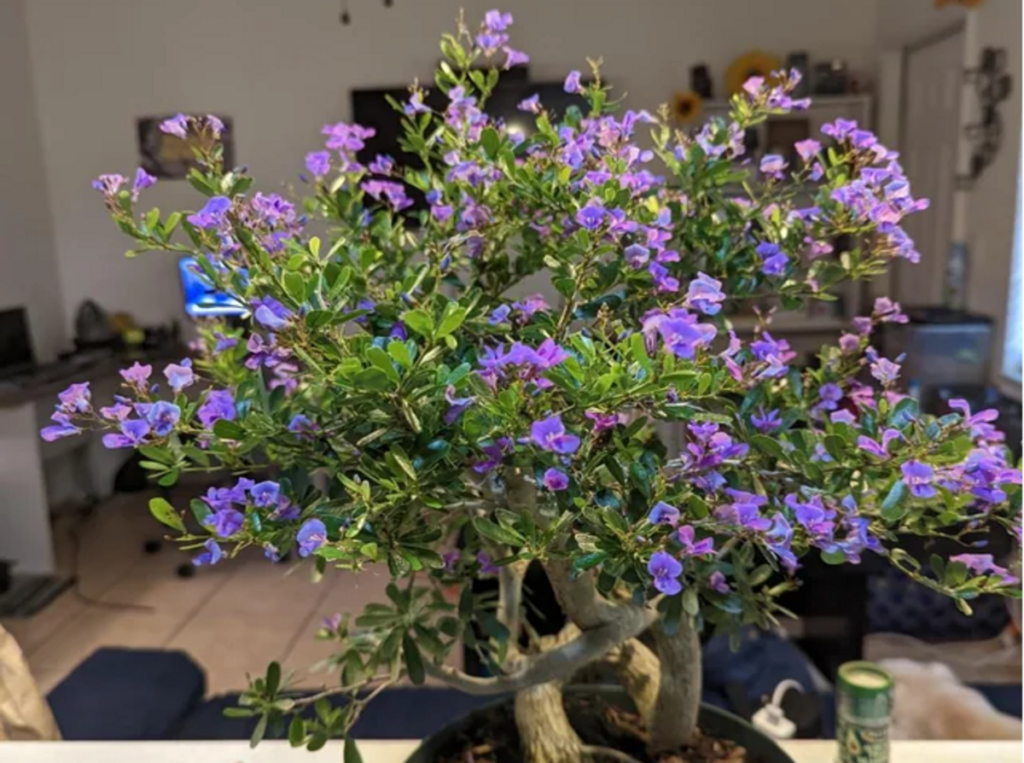
How to Care for and Maintain a Vietnamese Blue Bell Bonsai
To keep a Vietnamese Blue Bell Bonsai healthy and alive for a long time, you need to pay attention to what it needs. Here are some important things to know about taking care of your Vietnamese Blue Bell Bonsai:
Watering: Water the bonsai regularly to keep the soil evenly moist but not waterlogged. The frequency of watering may vary depending on factors like climate, humidity, and season. Check the soil’s moisture level before watering to prevent overwatering or underwatering.
Lighting: Place the Vietnamese Blue Bell Bonsai in a location that receives bright, indirect sunlight. It thrives in well-lit areas, but avoid exposing it to intense, direct sunlight, especially during the hot summer months.
Temperature: The Vietnamese Blue Bell Bonsai prefers warm temperatures. Protect it from extreme cold or freezing temperatures, as it is not frost-tolerant.
Humidity: Bonsai trees benefit from increased humidity levels. You can place a humidity tray with water near the bonsai or mist the leaves occasionally to raise the humidity around the tree.
Fertilizing: During the growing season (spring to early autumn), fertilize the Vietnamese Blue Bell Bonsai with a balanced liquid fertilizer every two to four weeks. Reduce or stop fertilizing during the dormant winter period.
Pruning and Shaping: Regularly prune the bonsai to maintain its shape and encourage compact growth. Pinch back new shoots to promote branching and density. Use bonsai wire to shape the branches gently.
Repotting: Repot the Vietnamese Blue Bell Bonsai every two to three years, preferably in the early spring before new growth begins. Trimming back some of the roots during repotting helps maintain the tree’s health and vigor.
Protection from Pests and Diseases: Inspect the bonsai regularly for signs of pests or diseases. If any issues are identified, take appropriate measures, such as using organic pest control methods or seeking advice from a horticulturist.
Winter Care: Protect the Vietnamese Blue Bell Bonsai during the colder months by providing it with some frost protection, especially if you live in a region with freezing temperatures. Placing it in an unheated garage or providing a frost cloth can help safeguard it.
Observation and Adjustment: Pay close attention to your Vietnamese Blue Bell Bonsai’s growth and appearance. Make adjustments to its care as needed based on how it responds to the environment and your maintenance practices.
Enjoy and Appreciate: Take time to appreciate the beauty and tranquility of your Vietnamese Blue Bell Bonsai. Regularly enjoy the fruits of your efforts and the sense of accomplishment that comes with nurturing a living work of art.
Taking care of a bonsai, like the Vietnamese Blue Bell Bonsai, is relaxing and enjoyable. The key to caring for a tree well is to keep a careful balance between light, water, nutrients, and paying attention to what the tree needs. If you give your Vietnamese Blue Bell Bonsai the care and attention it needs, it will grow and become a treasured part of your home or yard.
Vietnamese Blue Bell Bonsai Care Sheet
| Aspect | Care Tips |
| Watering | – Keep the soil evenly moist, but avoid overwatering. |
| – Water when the top layer of soil feels slightly dry. | |
| – Use a well-draining soil mix to prevent waterlogged roots. | |
| Sunlight | – Place in a well-lit area with bright, indirect sunlight. |
| – Protect from intense, direct sunlight during hot months. | |
| Temperature | – Prefers warm temperatures; avoid extreme cold. |
| – Protect from frost and freezing temperatures. | |
| Humidity | – Increase humidity levels around the bonsai. |
| – Use a humidity tray or mist the leaves occasionally. | |
| Fertilization | – Use a balanced liquid fertilizer during the growing season. |
| – Apply every 2-4 weeks and reduce in winter. | |
| Pruning and Trimming | – Regularly prune to maintain shape and encourage density. |
| – Pinch back new shoots to promote branching. | |
| Wiring and Styling | – Gently wire branches for desired shape. |
| – Aim for natural grace and balance in styling. | |
| Repotting | – Repot every 2-3 years during early spring. |
| – Trim back some roots to maintain health and vigor. | |
| Pest and Disease Control | – Regularly inspect for pests and signs of diseases. |
| – Address issues promptly using organic pest control methods. | |
| Winter Care | – Provide frost protection in colder months. |
| – Store in an unheated garage or use a frost cloth. | |
| Regular Maintenance | – Continually observe and adjust care as needed. |
| – Rotate the bonsai to ensure even growth. | |
| – Keep the display area neat and clean. |
Remember that the care for each bonsai may be different depending on things like the temperature, location, and health of the tree. If you check on the bonsai often and change how you care for it based on how it responds, it will stay healthy and beautiful.
Conclusion
The Vietnamese Blue Bell Bonsai is a mesmerizing art form that brings the beauty of nature into our lives. It may grow and become a treasured part of your life with appropriate care and attention. Accept the attraction of this little masterpiece and marvel at the glories of bonsai creativity!
FAQ
Q: What is a Vietnamese Blue Bell Bonsai?
A: Vietnamese Blue Bell Bonsai is a fascinating tiny tree from Vietnam called Chimonanthus praecox. It is popular among bonsai fans because of its beautiful blue-green leaves, tiny flowers, and elegant look.
Q: How do I care for a Vietnamese Blue Bell Bonsai?
A: To care for a Vietnamese Blue Bell Bonsai, provide it with bright, indirect sunlight and water it regularly, keeping the soil evenly moist. Fertilize during the growing season, prune to maintain shape, and protect it from extreme cold or frost. Regularly inspect for pests and diseases, and repot every 2-3 years to maintain health.
Q: What are the cultural significance and symbolism of the Vietnamese Blue Bell Bonsai?
A: The Vietnamese Blue Bells Bonsai is a culturally important thing in Vietnam. It is a sign of beauty, strength, and respect for nature. It is often linked with peace and calmness, which makes it a valuable addition to bonsai collections.
Q: Can I display the Vietnamese Blue Bell Bonsai indoors?
A: Yes, the Vietnamese Blue Bell Bonsai can be displayed indoors. Choose a well-lit area with bright, indirect sunlight for optimal growth. Provide humidity using a tray or misting to maintain its health and elegance indoors.
Q: How often should I fertilize my Vietnamese Blue Bell Bonsai?
A: Fertilize the Vietnamese Blue Bell Bonsai every 2-4 weeks during the growing season (spring to early autumn) using a balanced liquid fertilizer. Reduce or stop fertilization during the dormant winter period.
Q: When should I repot my Vietnamese Blue Bell Bonsai?
A: Repot the Vietnamese Blue Bell Bonsai every 2-3 years during early spring, just before new growth begins. Trimming back some of the roots during repotting helps maintain the tree’s health and vigor.
Q: Can I shape and style my Vietnamese Blue Bell Bonsai?
A: Yes, you can shape and style your Vietnamese Blue Bell Bonsai using pruning and wiring techniques. Choose a bonsai style that complements the tree’s natural growth pattern and expresses your artistic vision.
Q: What should I do if my Vietnamese Blue Bell Bonsai gets pests or diseases?
A: Regularly inspect the bonsai for signs of pests or diseases. If any issues are identified, take appropriate measures, such as using organic pest control methods or seeking advice from a horticulturist.
Q: How do I protect my Vietnamese Blue Bell Bonsai during the winter?
A: Provide frost protection for your Vietnamese Blue Bell Bonsai during the colder months. Place it in an unheated garage or use a frost cloth to safeguard it from freezing temperatures.
Q: How can I enjoy regular maintenance of my Vietnamese Blue Bell Bonsai?
A: Regularly observe and adjust care practices as needed based on the bonsai’s response. Rotate the bonsai for even growth, and keep the display area neat and clean for a captivating presentation.
Q: Can I grow a Vietnamese Blue Bell Bonsai from seeds?
A: Yes, you can grow a Vietnamese Blue Bell Bonsai from seeds. However, keep in mind that bonsai cultivation from seeds requires patience and can take several years before the tree develops into a mature bonsai.
Q: How often should I water my Vietnamese Blue Bell Bonsai?
A: Water the Vietnamese Blue Bell Bonsai regularly, keeping the soil evenly moist. The frequency of watering may vary depending on factors like climate, humidity, and season. Check the top layer of soil before watering to prevent overwatering or underwatering.
Q: Can I prune my Vietnamese Blue Bell Bonsai during the flowering season?
A: While light pruning is generally acceptable during the flowering season, it’s best to avoid heavy pruning that may remove too many buds or flowers. Consider pruning after the flowering period to maintain the tree’s shape and health.
Q: What are some common bonsai pests that may affect the Vietnamese Blue Bell Bonsai?
A: Common bonsai pests that may affect the Vietnamese Blue Bell Bonsai include aphids, spider mites, scale insects, and mealybugs. Regularly inspect the tree for signs of infestation and take appropriate measures to control pests.
Q: Can I train my Vietnamese Blue Bell Bonsai into various bonsai styles?
A: Yes, the Vietnamese Blue Bell Bonsai can be trained into various bonsai styles, such as formal upright, informal upright, cascade, and slanting. The tree’s natural growth pattern and characteristics will influence the choice of the bonsai style.
Q: How do I know when my Vietnamese Blue Bell Bonsai needs to be repotted?
A: When the root system of the Vietnamese Blue Bell Bonsai becomes pot-bound, which means the roots have filled the pot, it’s time to repot the plant. Most of the time, repotting is done every two to three years in the early spring before new growth starts.
Q: Can I keep my Vietnamese Blue Bell Bonsai indoors permanently?
A: While the Vietnamese Blue Bell Bonsai can be displayed indoors, it benefits from spending time outdoors to receive natural light and air circulation. Consider placing it outdoors during suitable weather conditions to promote its overall health.
Q: Is the Vietnamese Blue Bell Bonsai a beginner-friendly bonsai tree?
A: The Vietnamese Blue Bell Bonsai can be suitable for beginners, but like any bonsai, it requires regular care and attention. Beginners should start with a healthy specimen and gain knowledge about bonsai care to ensure its well-being.
Q: How do I encourage my Vietnamese Blue Bell Bonsai to bloom during the flowering season?
A: The Vietnamese Blue Bell Bonsai typically bloom in late winter. To encourage flowering, provide the tree with proper sunlight, temperature, and care throughout the year. Ensure it receives a period of dormancy during the winter, which is essential for flower production.
Q: Can I create a bonsai forest or group planting with Vietnamese Blue Bell Bonsai?
A: Yes, you can create a bonsai forest or group planting with Vietnamese Blue Bell Bonsai. Combining multiple trees in a harmonious arrangement can create a captivating display resembling a natural scene or a mini-landscape.
Also Read:


